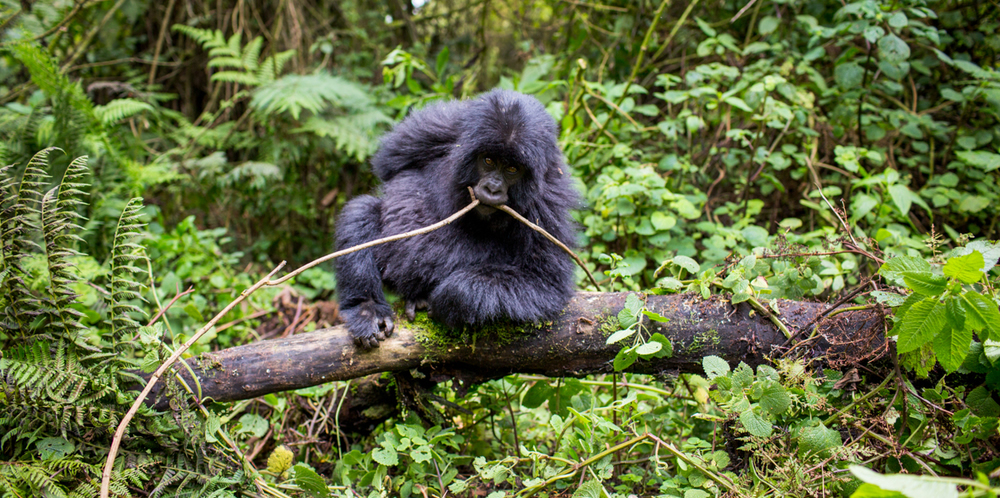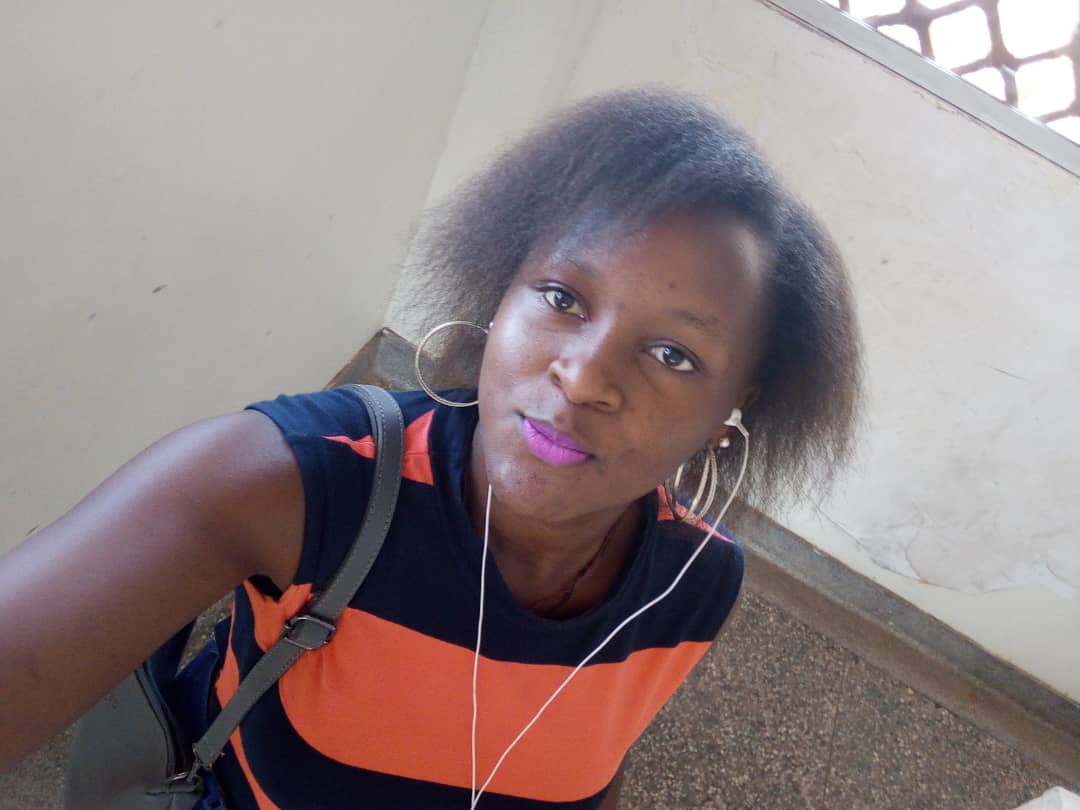When many travelers think of Uganda’s rainy season, they imagine endless downpours, muddy trails, and challenging conditions. These perceptions often deter people from planning their gorilla trekking adventures during this time. However, these assumptions don’t tell the whole story. Trekking for mountain gorillas in Uganda during the rainy months can offer a surprisingly rewarding experience for those open to the adventure.
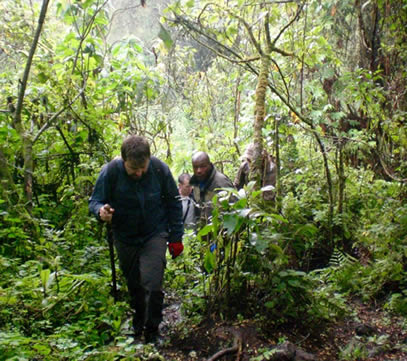
The wet season in Uganda typically falls between March and May and from October to November. While it rains, gorilla trekking trails become slippery and more challenging, it also brings many benefits that can significantly enhance the experience of visiting mountain gorillas. From the stunning transformation of the forest landscape to the opportunity for more intimate wildlife encounters, the rainy season offers a unique side of Uganda’s natural beauty that many travelers overlook.
For those willing to embrace the elements, gorilla trekking during the rainy season can be a deeply immersive experience. By rethinking what it means to trek in the rain, travelers can unlock a side of Uganda often missed during the peak dry season.
Why Trek gorillas in the wet season?
Lush and Vibrant Gorilla Habitat
The rainy season in Uganda breathes new life into the dense forests of Bwindi Impenetrable National Park and Mgahinga Gorilla National Park, the primary habitats of mountain gorillas. The periodic rainfall rejuvenates the forest floor, causing a burst of greenery that transforms the landscape into a lush, vibrant paradise. This time of year is when the forest is most beautiful, with dense foliage, blooming wildflowers, and a fresh, clean atmosphere that makes the trekking experience feel like a true immersion into nature.
The increased rainfall results in abundant fresh vegetation, directly benefiting the gorillas. During these months, the gorillas do not have to travel as far to find food, as the forest is full of tender shoots, leaves, and wild fruits. This leads to gorilla groups often staying in lower elevations, making them easier to reach for trekkers. As a result, the trekking time can sometimes be shorter during the rainy season, offering visitors more time to observe the gorillas rather than hiking through rugged terrain.
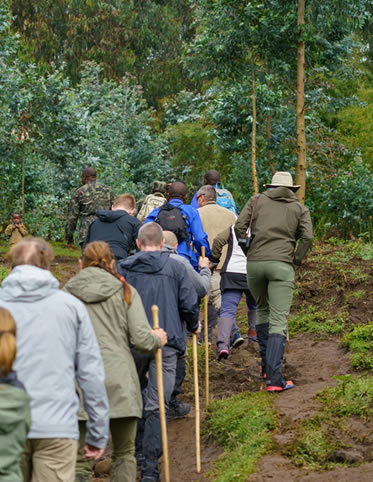
For those who appreciate nature at its most dynamic, the rainy season also brings a heightened sensory experience. Raindrops pattering on the canopy, the rich scent of wet earth, and the sight of mist rolling through the treetops add an atmospheric charm that is hard to replicate in the drier months. This unique environment creates a magical backdrop for encountering gorillas in their natural habitat, making the trek more than just a wildlife sighting but a holistic experience of Uganda’s thriving ecosystem.
Better Gorilla Sightings
One of the lesser-known advantages of trekking for mountain gorillas during Uganda’s rainy season is the increased chance of better sightings. The rains transform the forest, making it more appealing not only for visitors but also for the gorillas themselves. As the rains encourage new vegetation growth, gorillas remain at lower altitudes where fresh, tender shoots and leaves are more abundant. This behaviour contrasts with the dry season when gorillas often travel further and higher into the mountains in search of food, making them harder to locate.
With food sources more plentiful and closer to the park’s lower trails, the gorillas tend to stay in more accessible areas. This can result in shorter treks to reach the gorilla groups, giving visitors more time to observe their behaviours and interactions without the strain of longer hikes. The rainy season thus allows trekkers to spend more of their limited one-hour interaction time immersed in observing the gorillas up close.
The cooler temperatures during the rainy season also affect gorilla behavior. With the temperature drop, gorillas are more active throughout the day, engaging in feeding, playing, and social interactions that are a delight to observe. These factors combine to create a trekking experience where visitors can witness a variety of behaviours, from mothers nurturing their young to juveniles playfully exploring their surroundings. This makes rainy season trekking a prime time for those seeking a deeper understanding of gorilla life and behaviour.
Fewer Crowds, More Intimate Encounters
One of the most significant advantages of visiting Uganda for gorilla trekking during the rainy season is the opportunity for a more intimate and uncrowded experience. The rainy months tend to attract fewer tourists compared to the dry season, which is typically considered the peak time for trekking. This decrease in visitors means the trekking groups are often smaller, allowing for a more exclusive and personal encounter with the gorillas.
With fewer people trekking simultaneously, the experience becomes more serene and focused. You are less likely to encounter other groups along the trails, allowing for a deeper immersion into the tranquillity of the rainforest. This more private setting also extends to the time spent with the gorilla family. The reduced number of tourists can make the hours spent observing the gorillas feel more personal, offering a quieter atmosphere where you can fully absorb the details of the gorillas’ interactions, from the playful antics of juveniles to the powerful presence of a silverback.
![]()
Additionally, the quieter environment during the rainy season means less noise and human disturbance around the gorilla families. This can make the gorillas more relaxed and at ease, enhancing the quality of the interaction for visitors. Without the distractions of large crowds, trekkers have a better chance of observing the more subtle aspects of gorilla behaviour, such as grooming rituals, complex social interactions, and quieter moments of rest within the group.
For those seeking a meaningful connection with nature, the solitude and intimacy of a rainy-season trek offer a unique opportunity to experience mountain gorillas in a setting that feels closer to their actual, untouched world.
Discounted Permits and Accommodation
During the dry season, the demand for gorilla trekking permits is high, reflected in the standard pricing of permits and accommodation rates. However, during the rainy months, visitor numbers tend to dip, prompting a decrease in permit costs and a range of discounts on lodges and accommodations near the parks.
In Uganda, a gorilla trekking permit costs around $700 during the peak season. But during the rainy season, particularly in April, May, and November, discounts may be available, reducing costs and making this unique experience more accessible to a broader range of travellers. This allows budget-conscious travellers to enjoy the same high-quality trekking experience at a fraction of the usual cost.
Beyond permit savings, many lodges and eco-resorts in areas like Bwindi Impenetrable National Park and Mgahinga Gorilla National Park offer rainy season discounts. Lower occupancy rates during these months often translate into reduced accommodation prices, guided tours, and other amenities. Travelers can find deals on various lodging options, from luxurious eco-lodges with stunning forest views to more budget-friendly campsites. This makes it possible to enjoy a more extended stay in Uganda’s gorilla trekking regions without the high costs associated with peak-season travel.
These financial advantages can be especially appealing to those who wish to combine their gorilla trekking adventure with other activities in Uganda, such as visiting Queen Elizabeth National Park, hiking in the Rwenzori Mountains, or exploring the cultural heritage of local communities. Travellers can experience the beauty of Uganda’s wildlife while stretching their budget further by choosing to trek during the rainy season.
Better Photography Opportunities
The rainy season in Uganda offers a unique allure for photographers, especially those looking to capture the mystique of the rainforest and the natural beauty of mountain gorillas. While trekking through rain might seem daunting, it provides a rare opportunity for breathtaking photography that cannot be replicated during the drier months.
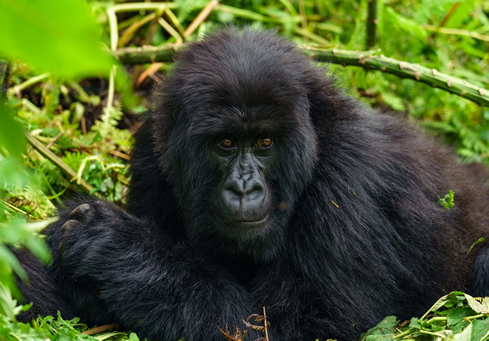
One of the most captivating aspects of the rainy season is the mist that frequently envelops the forest, particularly in the higher altitudes of Bwindi Impenetrable National Park. This mist creates a mystical, almost ethereal atmosphere, adding depth and drama to photographs. The contrast between the misty backdrop and the lush greenery of the forest provides a perfect setting for capturing gorillas in their natural environment, making every shot feel like a scene from a nature documentary.
Additionally, the rain brings out the rich, saturated forest colours. The foliage glows in vibrant shades of green, the wet tree trunks glisten, and the ground is carpeted with freshly sprouting plants. For photographers, this means more dynamic shots with deeper contrasts and richer tones, whether focusing on a gorilla’s expressive face or the intricate details of the surrounding flora.
Another advantage of the rainy season is the softer, diffused light that the overcast skies provide. Unlike the dry season’s bright, direct sunlight, rainy days’ gentle light reduces harsh shadows and highlights. This creates a more balanced and even exposure, making capturing clear, detailed images of the gorillas easier, even in challenging lighting conditions within the dense forest.
Tips for a Successful Rainy Season Trek
Gorilla trekking during the rainy season can be an enriching experience but requires extra preparation to ensure comfort and safety. The rain can make trails slippery and the conditions more challenging, so being well-equipped for the adventure is essential. Here are some basic tips and recommendations to make the most of your rainy-season trek:
- Invest in Waterproof Gear: A high-quality jacket and pants keep you dry during unexpected downpours. Ponchos can also be helpful for quickly covering up if the rain starts suddenly. Ensure your clothing is lightweight but able to withstand the moisture common during the rainy months.
- Sturdy, Waterproof Hiking Boots: The trails through Bwindi Impenetrable National Park and Mgahinga Gorilla National Park can become muddy and slippery when wet, so sturdy hiking boots with good traction are a must. Waterproof boots are handy as they keep your feet dry when navigating through damp and muddy areas.
- Gaiters and Hiking Poles: Gaiters, which wrap around the lower legs and keep water and mud out of your boots, are valuable additions. Hiking poles can also provide extra stability on slippery slopes, helping you maintain balance while navigating the dense forest.
- Layering and Moisture-Wicking Clothing: The weather in Uganda’s rainforest can shift quickly, so layering is critical to staying comfortable. Opt for moisture-wicking base layers to keep sweat off your skin and add insulating layers for warmth. A fleece jacket can provide warmth during the cooler early mornings.
- Waterproof Bags for Electronics: For those bringing cameras and other electronics, waterproof bags or cases are essential to protect equipment from moisture. This is particularly important for photographers, as sudden rain showers can otherwise damage expensive gear. A dry bag can also store snacks, maps, and extra clothing.
- Keep Hydrated and Bring Snacks: Trekking can be physically demanding, especially in wet conditions. Bring plenty of water and high-energy snacks like granola bars or dried fruit to keep your energy up during the hike.
By preparing for the elements, trekkers can fully enjoy the unique experiences of the rainy season without being caught off guard by the weather. With the right gear and mindset, the rains become a part of the adventure, adding to the sense of exploration as you journey through one of Africa’s most lush and dynamic environments.
Wildlife Beyond Gorillas
One of the hidden treasures of trekking during Uganda’s rainy season is the chance to witness the remarkable biodiversity that flourishes in Bwindi Impenetrable National Park and Mgahinga Gorilla National Park. While mountain gorillas are the star attraction, the rains bring to life a host of other wildlife and plant species that thrive in the rejuvenated forest ecosystem, offering a richer and more varied experience for nature lovers.
The increased moisture during the rainy season spurs vegetation growth, attracting various animals that might be less visible during the dry months. The rainy season is gratifying for birdwatchers, as the abundant plant growth supports many bird species, including many endemic to the Albertine Rift region. Visitors can spot colourful birds like the African green broadbill, Rwenzori turaco, and Shelley’s crimson wing amidst the forest canopy. The heightened bird activity and the vibrant backdrop of a rain-soaked forest make for spectacular birdwatching and photography opportunities.
https://www.wildugandasafaris.com/wp-content/uploads/2022/01/bwindi-trekking.jpg
Additionally, the rainy season is a prime time to see smaller mammals, insects, and amphibians become more active with the increased humidity. Species like chameleons, forest frogs, and various types of butterflies are more easily spotted in damp conditions, adding a layer of intrigue to the trek. For those interested in the intricate web of life within these forests, the rainy season offers a closer look at the complex interactions between the flora and fauna.
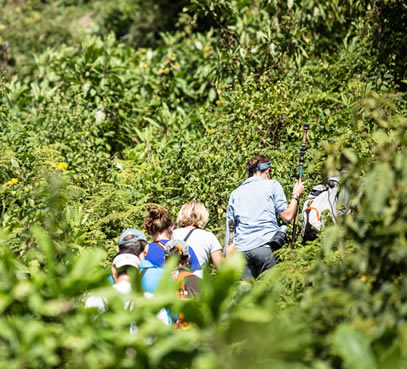
The forest floor is also covered in diverse fungi and wildflowers that bloom during this time, adding bursts of colour to the dense greenery. These elements not only enhance the scenic beauty of the trek but also provide a fascinating insight into the rich ecosystem that supports the mountain gorillas. Trekkers who take the time to appreciate these details will find that the rainy season offers a deeper, more holistic view of Uganda’s forest life, going beyond the famous gorilla families.
In short, while gorilla encounters remain the highlight, the rainy season presents an opportunity to immerse oneself in the full spectrum of life these unique forests sustain. For nature enthusiasts, the blend of gorilla sightings and diverse wildlife makes trekking during this season an unparalleled adventure.
Conclusion
Gorilla trekking during the rainy season offers an experience that defies conventional travel wisdom. While the dry season might be the more popular choice, the rains have their rhythm, revealing a side of the rainforest that is both raw and enchanting. The gentle patter of raindrops creates a soothing soundtrack as mist drifts through the towering trees, offering a backdrop that feels almost otherworldly. Trekking through this transformed landscape means walking a path less travelled, where the challenges of rain become part of the adventure rather than obstacles to it.
For those who embrace the season’s unpredictability, there is a certain magic in the interplay between the rains and the forest. It’s a time when the landscape is rich with life, offering moments of quiet reflection and awe-inspiring encounters with one of the world’s most majestic creatures. In every sense, the rainy season invites you to connect with nature on a deeper level — to step out of the ordinary and into an adventure long after the journey ends.

